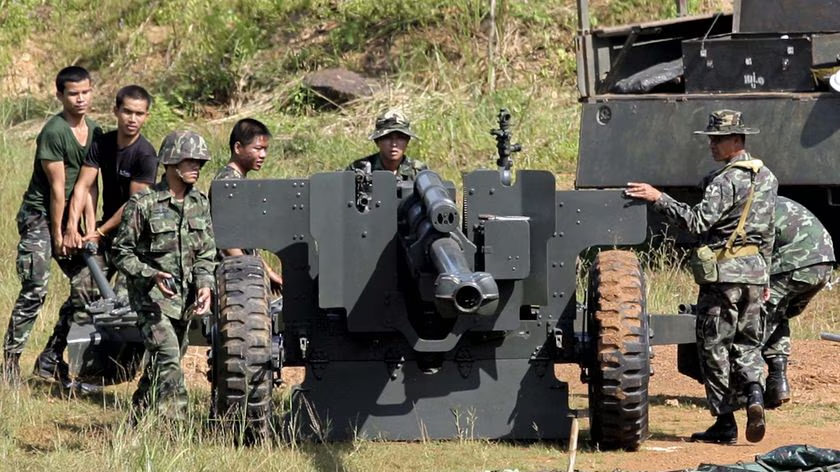Peace has finally been restored to the Thailand–Cambodia border following weeks of deadly fighting, as the military commanders of the two countries met on Tuesday to officially ratify de-escalation measures and observe a fragile ceasefire. The negotiations, conducted near the war zone, came a day after a truce agreement was brokered in Malaysia.
The frontier region, where its worst violence had taken place in over a decade, was the focal point of local concern as well as international mediation. At least 38 to 40 people have died, most of them civilians, and over 300,000 citizens of both nations were displaced by the clashes, according to reports.
The ceasefire took effect at midnight on July 29, despite a momentary flare-up of tensions when Thailand protested Cambodia’s breach of the ceasefire in at least five locations immediately after the truce took effect. Cambodian officials wasted no time in denying the charges, maintaining that their soldiers remained devoted to peace and stability.
Speaking to the media, Thailand’s acting PM Phumtham Wechayachai said the situation was now peaceful and there was “no further escalation.” He further stated that he had personally also spoken to Cambodian Defense Minister Tea Seiha, and the two sides agreed to abide by the ceasefire to avoid further bloodshed.
The commanders of the military themselves are the leaders in the thrust to pursue peace. In a significant breakthrough, Thailand’s commander of the 2nd Army Region, who oversees the most affected border provinces, met his Cambodian counterpart directly. The meeting concluded with a shared commitment to cease troop deployment, refrain from deploying artillery, and maintain current positions on the disputed boundary.
The two armies have established four-member coordination committees that will be in charge of facilitating real-time communication and settling emerging conflicts. The committees will meet frequently and also assist in the recovery and repatriation of injured soldiers and civilians, as well as in the return of bodies from conflict zones.
The restoration of stability is already evident in such towns as Kantharalak, a Thai district just 30 km from the frontline. Stores are opening again, transport is returning, and those who had fled are beginning to trickle back. However, aid officials report that many displaced families remain in shelters, hoping the nightmare of violence will soon pass.
The talks for peace are occurring amid heightened global pressure. The Malaysia signed ceasefire agreement was warmly supported by regional players, with Malaysia’s Prime Minister Anwar Ibrahim leading the charge. He played an integral part in negotiating terms, warning that ongoing fighting would lead to even greater humanitarian catastrophe.
The United States and China, which also have strategic stakes in the part of Southeast Asia, also weighed in. U.S. President Donald Trump warned that previously lifted trade tariffs on both Cambodia and Thailand, worth billions of dollars, can once again be imposed if there is an escalation of hostilities. The U.S. had lifted 36% tariffs earlier this year under a regional economic cooperation agreement. China also said the same, calling on both parties to use “maximum restraint.”
The second step in the peace process is a meeting of a high-level border management committee on August 4 in Phnom Penh. The same will devise clear instructions for troop disengagement, civilian access, and mechanisms for long-term conflict resolution.
While Tuesday’s top-level military session is an important milestone, experts indicate that the ceasefire remains precarious. At its roots, the conflict remains land grievances from colonial definitions of borders and nationalist sentiment, which continue to smolder beneath. Peace will require more than military coordination, they argue, but genuine political will and reconciliation at the grassroots level.
For the moment, the guns have gone silent, and the two countries have an opportunity to construct a more enduring and cooperative future. If this ceasefire holds and becomes a permanent peace or turns out to be a fleeting lull in hostilities, only time will tell.
Read Recent News
Midtown Office Shooting Leaves 4 Dead, Including Off-Duty Officer; Gunman Dies by Suicide
